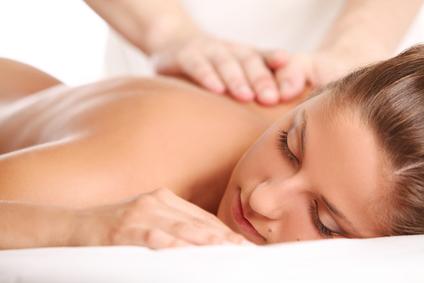Combining Chiropractic Care and Massage for Optimal Outcomes:
While chiropractic promotes and maintains proper alignment of joints and surrounding tissues, massage therapy focuses on releasing tension from the muscles. These two therapies work together to help correct the ability of the nervous system to function properly, increase joint mobility and relieve muscle tension for both wellness and as treatment for pain and musculoskeletal conditions.
Inner Health Chiropractic practices have in-house massage therapists who work in combination with the chiropractors. This gives patients the opportunity to see specialized professionals ensuring there is continuity of care between the treatments you are receiving.
Benefits of Massage Therapy
Massage therapy can lead to a string of good things. One after another, the good symptoms just keep coming and building on top of one another. There is definitely a reason why massage therapy feels so good. Massage therapy can increase circulation, range of motion, sleep, and relaxation. These things can lead to a higher immunity, less stress, and less of a chance to strain a muscle. These also can lead to age reduction.
Massage therapy can also help those with pain as well. Muscles can become tight and knot up. Massages can loosen and relax those muscles. Massage can also alleviate nerve compression. Migraines are also defeated by massage therapy. Muscle tension in the head is one of many reasons why a person might suffer from a migraine. By using massage therapy, specialists can convince these muscles to relax and reduce spasms.
Massage therapy has been proven to be a better option for muscle pain than medication. Often when a person does a strenuous activity, their first instinct is to take medication. However, by doing this they are prolonging their pain. Since massage therapy increases blood flow, pain relief comes much faster and it also helps heal the strained muscle in the process.
Anyone can benefit from therapeutic massage therapy. Contact our office about being connected with one of our registered and certified therapists. Our therapists are eager to provide treatment tailored to you so you can start feeling the benefits of massage therapy.
Physical Benefits to Chiropractic & Massage
- Speeds up the healing of strained muscles and sprained ligaments
- Reduces pain & swelling
- Reduces muscle spasms
- Reduced formation of adhesions
- Improves circulation of blood and lymph
- Relieves tension and strain of whiplash related injuries
- Helps reduce headaches
- Strengthens immune function
- Improves posture
Common Massage Therapy Terminology
Longitudinal gliding is a basic but effective massage technique administered in the direction of the blood flow. It aids the fluid dispersion from the injury site, and thus helps reduce inflammation and swelling. It is also very useful in relaxing tight muscles.
Kneading can be performed in different ways. The pressure used must vary according to the purpose of the massage and the bulk of the tissues under treatment. The rhythm and rate of the movement are equally important as the pressure is applied intermittently.
Myofascial release is manual technique for stretching the fascia with the aim to balance the body. Fascia is located between the skin and the underlying structure of muscle and bone. Injuries, stress, trauma, and poor posture can cause restriction to fascia, and the goal of myofascial release is to release fascia restriction and restore its tissue.
Trigger point therapy is a technique that involves the applying of pressure to tender muscle tissue in order to relieve pain and dysfunction in other parts of the body. “Knots” in muscles are commonly treated with trigger points.
Transverse friction is a therapy applied directly by the fingers. Transverse frictions use an oscillating pressure applied across the direction of the tissue fibers. This technique is used mainly on tendon or ligament injuries to help break down thickened, pain-producing scar tissue.
Cross-fiber friction techniques create a stretching and broadening effect in large muscle groups; deep transverse friction is applied to reduce adhesions and to help create strong, flexible repair during the healing process.




